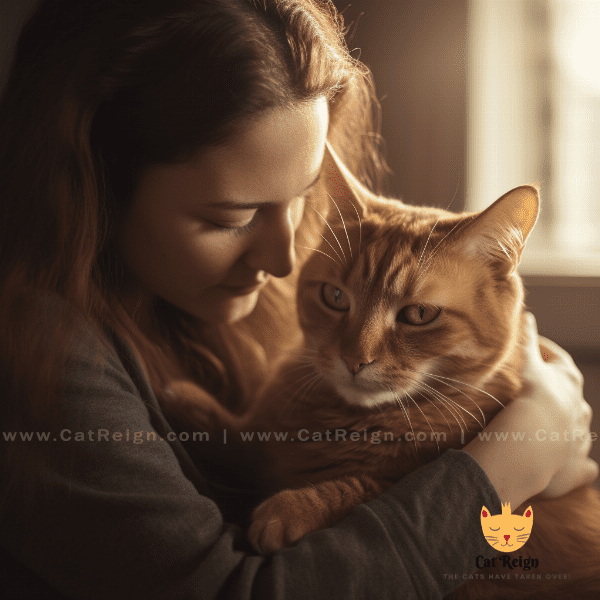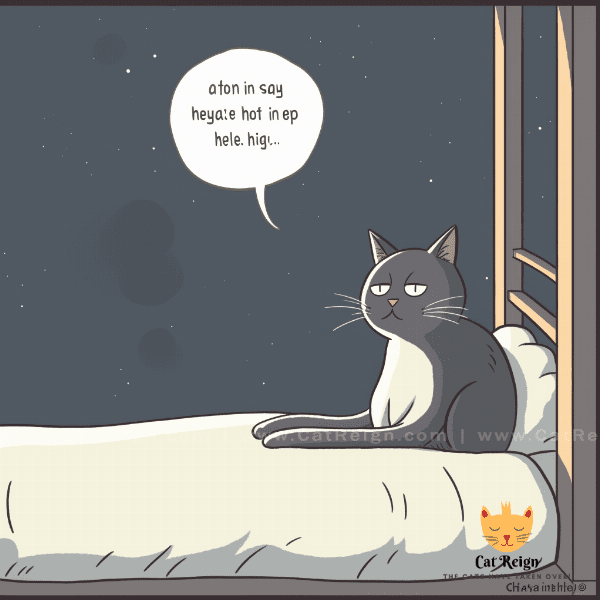Table of Contents
- Introduction to Feline Vocalization
- Meowing: The Most Common Cat Sound
- Purring: The Sign of a Happy Cat
- Hissing and Growling: Signs of Aggression
- Chirping and Chattering: Unique Cat Sounds
- Screaming and Yowling: Signs of Distress
- Understanding Your Cat’s Body Language
- How to Communicate with Your Cat Using Vocalization
- Common Myths About Cat Vocalization
- Conclusion: Developing a Stronger Bond with Your Cat through Vocalization
Introduction to Feline Vocalization
Cats are known for being independent and self-sufficient creatures, but they are also highly communicative. Unlike humans, cats don’t use words to express themselves, but they do use a wide range of vocalizations to communicate with us and with each other. Understanding what your cat is trying to say can help you build a stronger bond with your pet and can also help you identify when something may be wrong.
Why Do Cats Vocalize?
Cats vocalize for a variety of reasons, and it’s important to understand what these different vocalizations mean. Some cats may meow to get attention or to request food, while others may hiss or growl to show aggression or fear. Purring is often a sign of contentment, while yowling or screaming may indicate distress or pain.
The Science of Cat Vocalization
Cats have a complex vocalization system that involves a combination of sounds and body language. They use their vocal cords, mouth, tongue, and even their ears to create a variety of sounds that can convey different meanings. Scientists have identified dozens of different cat sounds, each with its own unique purpose.
How to Interpret Your Cat’s Vocalizations
While it may take some time and practice to learn how to interpret your cat’s vocalizations, it’s an important skill for any cat owner to develop. Pay attention to your cat’s body language, as well as the tone and volume of their meows, purrs, and other vocalizations. With time and practice, you’ll be able to understand what your cat is trying to tell you and respond appropriately.
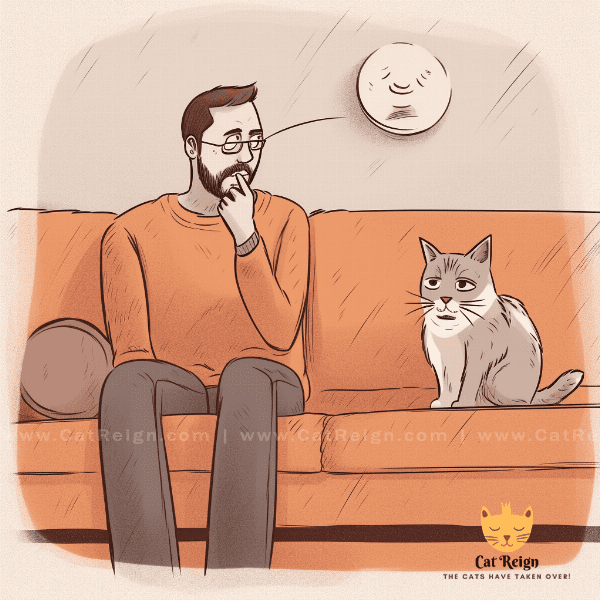
Meowing: The Most Common Cat Sound
Meowing is the most common sound that cats make, and it’s also the one that most people associate with cats. But despite its prevalence, meowing is a surprisingly complex sound that can convey a wide range of meanings.
Why Do Cats Meow?
Cats meow for many reasons, and it’s important to understand what your cat is trying to tell you. Some cats meow to request food or attention, while others may meow to greet their owners or to announce their presence. Female cats may meow during mating season, and older cats may meow more frequently due to age-related changes in their vocal cords.
Different Types of Meows
Not all meows are created equal. Cats can make a variety of meowing sounds, each with its own unique tone and pitch. Some cats may make a short, sharp meow to demand attention, while others may make a longer, more drawn-out meow to express affection. Some cats may even make a trilling sound, which is a sign of excitement or happiness.
Understanding Your Cat’s Meows
To understand what your cat is trying to say with their meows, you’ll need to pay attention to the context in which they are meowing, as well as the tone and pitch of their meow. A short, sharp meow may indicate that your cat is hungry or wants to play, while a longer, more drawn-out meow may indicate that your cat is feeling lonely or bored.
Responding to Your Cat’s Meows
If your cat is meowing excessively or in a way that is unusual for them, it may be a sign that something is wrong. Make sure that your cat has plenty of food, water, and attention, and take them to the vet if you suspect that they may be in pain or discomfort. With time and practice, you’ll be able to understand your cat’s meows and respond to them appropriately.
Conclusion
Meowing is a complex and important aspect of feline vocalization. By understanding the different types of meows and what they mean, you can develop a stronger bond with your cat and provide them with the care and attention that they need. In the next section, we’ll explore another common cat sound: purring.

Purring: The Sign of a Happy Cat
Purring is one of the most pleasant sounds that a cat can make, and it’s also a sign that your cat is content and happy. But what exactly causes a cat to purr, and what does it mean?
Why Do Cats Purr?
Despite the fact that purring is often associated with happiness and contentment, cats may also purr when they are in pain or distress. However, in most cases, purring is a sign that your cat is feeling relaxed and comfortable. It’s believed that cats purr by vibrating their vocal cords, which produces a low-pitched sound that can be felt as well as heard.
The Many Benefits of Purring
In addition to being a sign of contentment, purring may also have a number of health benefits for cats. The vibrations produced by purring may help to heal bones and tissues, and may also promote relaxation and reduce stress. Purring may also help cats to bond with their owners and may even help to reduce blood pressure in humans.
When Cats Don’t Purr
While most cats are capable of purring, not all cats will purr in all situations. Some cats may not purr if they are feeling stressed or anxious, while others may not purr if they are in pain or discomfort. Additionally, some breeds of cats may be less likely to purr than others.
Responding to Your Cat’s Purring
If your cat is purring, it’s generally a sign that they are feeling happy and content. You can respond to your cat’s purring by petting them, playing with them, or simply spending time with them. By providing your cat with the love and attention that they need, you can help to ensure that they continue to purr and be happy.
Conclusion
Purring is a complex and fascinating aspect of feline behavior. By understanding why cats purr and what it means, you can develop a deeper appreciation for your cat and their unique personality. In the next section, we’ll explore some of the less pleasant sounds that cats can make, including hissing and growling.

Hissing and Growling: Signs of Aggression
While cats are generally known for their cute and cuddly personalities, they can also display aggressive behavior in certain situations. Hissing and growling are two of the most common signs of feline aggression, and it’s important to understand what these sounds mean in order to keep both yourself and your cat safe.
Why Do Cats Hiss and Growl?
Cats may hiss or growl when they feel threatened or scared. These sounds are often accompanied by a puffed-up tail, arched back, and flattened ears, all of which are signs that your cat is feeling defensive. Hissing and growling can also be signs of territorial aggression, particularly if your cat is hissing or growling at another cat.
Dealing with Aggressive Cats
If your cat is hissing or growling, it’s important to give them space and avoid approaching them until they have calmed down. You should also make sure that your cat has a safe and secure place to retreat to, such as a cozy cat bed or a designated hiding spot. If your cat’s aggressive behavior is becoming a problem, you may want to consider consulting with a veterinarian or animal behaviorist for guidance.
Preventing Aggression in Cats
The best way to prevent aggression in cats is to provide them with plenty of love and attention, as well as regular playtime and exercise. You should also make sure that your cat has access to plenty of fresh water and healthy food, and that they are up-to-date on all of their vaccinations and wellness checks.
Conclusion
While hissing and growling can be scary sounds, they are a natural part of feline behavior. By understanding why cats hiss and growl and how to deal with these behaviors, you can provide your cat with the care and attention that they need while also keeping yourself and your family safe. In the next section, we’ll explore some of the more unusual sounds that cats can make, including chirping and chattering.

Chirping and Chattering: Unique Cat Sounds
In addition to meowing, purring, hissing, and growling, cats can also make a variety of other unique sounds that are worth exploring. Chirping and chattering are two of the most interesting cat sounds, and they can be a sign of excitement, curiosity, or even frustration.
Chirping: The Bird-Like Sound
Chirping is a unique cat sound that sounds a lot like a bird. This sound is typically made when a cat sees something that they want to hunt, such as a bird or a mouse. Chirping is a sign of excitement and anticipation, and it can be a lot of fun to watch your cat make this sound.
Chattering: The Teeth-Chattering Sound
Chattering is another unique cat sound that sounds a lot like teeth chattering. This sound is typically made when a cat is frustrated or excited, and it’s often accompanied by a twitching tail or dilated pupils. Some experts believe that chattering is a sign of frustration, as cats may make this sound when they see something that they want but can’t reach.
How to Respond to Chirping and Chattering
If your cat is chirping or chattering, it’s usually a sign that they are feeling happy and playful. You can respond to these sounds by providing your cat with toys to play with or by spending time playing with them. Chirping and chattering are also signs that your cat is feeling curious, so you may want to consider taking your cat on a walk or allowing them to explore new environments.
Conclusion
Chirping and chattering are two of the most unique and interesting cat sounds, and they can provide a lot of insight into your cat’s personality and behavior. By understanding what these sounds mean and how to respond to them, you can develop a stronger bond with your cat and provide them with the love and attention that they need. In the next section, we’ll explore some of the more distressing sounds that cats can make, including screaming and yowling.
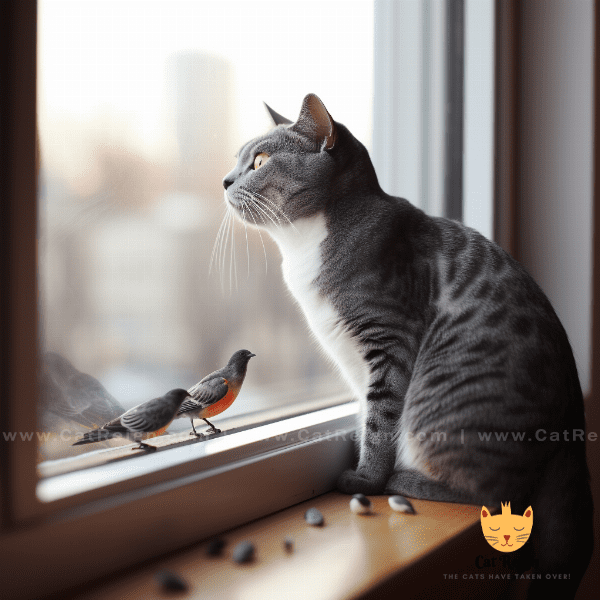
Screaming and Yowling: Signs of Distress
While most cat sounds are pleasant and enjoyable, there are some sounds that are more distressing and may indicate that your cat is in pain or distress. Screaming and yowling are two of the most alarming cat sounds, and they should be taken seriously.
Screaming: The High-Pitched Sound
Screaming is a high-pitched sound that cats may make when they are in extreme distress. This sound may be accompanied by other signs of distress, such as rapid breathing, panting, or a fast heart rate. If your cat is screaming, it’s important to get them to the vet right away, as this may be a sign of a serious medical emergency.
Yowling: The Loud, Drawn-Out Sound
Yowling is a loud, drawn-out sound that cats may make when they are in pain or discomfort. This sound may be accompanied by other signs of distress, such as limping or hiding. If your cat is yowling, it’s important to observe them closely and try to identify the source of their distress. You may also want to consult with a veterinarian to rule out any underlying medical conditions.
Dealing with Distressed Cats
If your cat is screaming or yowling, it’s important to remain calm and provide them with comfort and reassurance. You should also try to identify the source of their distress and address it as soon as possible. In some cases, this may involve administering first aid or taking your cat to the vet.
Preventing Distress in Cats
The best way to prevent distress in cats is to provide them with a safe and secure environment, plenty of love and attention, and regular wellness checks. You should also make sure that your cat is up-to-date on all of their vaccinations and that they are eating a healthy diet.
Conclusion
Screaming and yowling are distressing sounds that can be a sign of serious medical or emotional distress in cats. By understanding what these sounds mean and how to respond to them, you can provide your cat with the care and attention that they need to stay healthy and happy. In the next section, we’ll explore how to communicate with your cat using vocalization.

Understanding Your Cat’s Body Language
While vocalizations are an important aspect of feline communication, cats also use body language to express themselves. By understanding your cat’s body language, you can gain a deeper insight into their thoughts and feelings and develop a stronger bond with your pet.
Tail Position
The position of a cat’s tail can tell you a lot about their mood and temperament. A tail held high and puffed up may indicate that your cat is feeling confident and happy, while a tail that is held low and close to the body may indicate that your cat is feeling scared or anxious.
Ear Position
The position of a cat’s ears can also provide important clues about their mood. Ears that are held forward may indicate that your cat is feeling alert and interested, while ears that are flattened against the head may indicate that your cat is feeling scared or aggressive.
Eye Contact
Cats use eye contact to communicate a wide range of emotions, from love and affection to fear and aggression. A cat that is staring directly at you with dilated pupils may be feeling aggressive or territorial, while a cat that is blinking slowly may be feeling relaxed and content.
Vocalizations
As we’ve discussed in previous sections, cats use a variety of vocalizations to communicate with us and with each other. Meows, purrs, hisses, and growls can all convey different meanings, and it’s important to pay attention to the tone and volume of your cat’s vocalizations in order to understand what they are trying to say.
Conclusion
Understanding your cat’s body language is an important part of being a responsible and caring pet owner. By paying attention to your cat’s tail position, ear position, eye contact, and vocalizations, you can gain a deeper insight into your cat’s thoughts and feelings and provide them with the love and attention that they need. In the next section, we’ll explore some tips for communicating with your cat using vocalizations and body language.
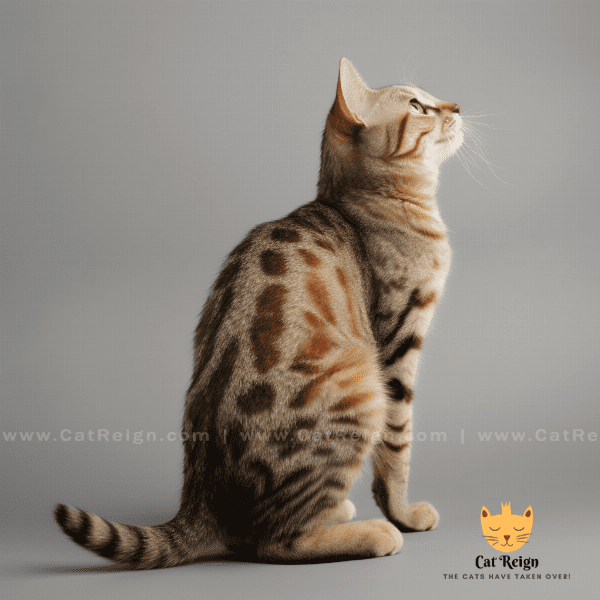
How to Communicate with Your Cat Using Vocalization
Communicating with your cat using vocalizations is an important part of building a strong and loving bond with your pet. By paying attention to your cat’s vocalizations and responding in kind, you can develop a deeper understanding of your cat’s unique personality and needs.
Meowing
Meowing is the most common form of feline vocalization, and it can convey a wide range of emotions, from happiness and contentment to frustration and distress. To communicate with your cat using meows, try to mimic the tone and volume of your cat’s meows and respond in a similar manner.
Purring
Purring is a sign that your cat is feeling content and happy, and it’s a great way to communicate love and affection to your pet. To communicate with your cat using purrs, try to imitate the sound and rhythm of your cat’s purring and respond with gentle strokes and cuddles.
Hissing and Growling
While hissing and growling are signs of aggression and fear, they can also be a way for your cat to communicate their boundaries and protect themselves. If your cat is hissing or growling, it’s important to give them space and avoid approaching them until they have calmed down.
Chirping and Chattering
Chirping and chattering are unique cat sounds that can be a sign of excitement and curiosity. To communicate with your cat using these sounds, try to imitate the tone and rhythm of your cat’s chirping and chattering and respond by providing your cat with toys and playtime.

Common Myths About Cat Vocalization
There are many myths and misconceptions about cat vocalization, and it’s important to separate fact from fiction in order to better understand your feline friend. In this section, we’ll debunk some of the most common myths about cat vocalization.
Myth #1: Cats Only Meow at Humans
While cats do meow at humans to communicate their needs and desires, they also meow at each other. Meowing is a natural part of feline communication, and cats use meows to communicate with each other in a variety of social contexts.
Myth #2: Cats Purr Only When They’re Happy
While cats do often purr when they are happy and content, they may also purr when they are in pain or distress. Purring is a self-soothing behavior that can help cats cope with a wide range of emotional and physical challenges.
Myth #3: Hissing and Growling Always Mean Aggression
While hissing and growling are often signs of aggression and fear, they can also be signs of other emotions, such as frustration or anxiety. It’s important to pay attention to your cat’s body language and other vocalizations in order to understand the context and meaning behind these sounds.
Myth #4: Chirping and Chattering Are Signs of Hunger
While cats may chirp and chatter when they are hungry, these sounds can also be signs of excitement and curiosity. Cats may make these sounds when they see something that they want to hunt, play with, or explore.
Conclusion
By debunking these common myths about cat vocalization, we can better understand the complex and nuanced ways that cats communicate with us and with each other. By paying attention to your cat’s unique vocalizations and body language, you can develop a deeper understanding of their needs and emotions, and provide them with the love and attention that they need to thrive. Remember to always respect your cat’s boundaries and communicate with them in a gentle and loving manner.
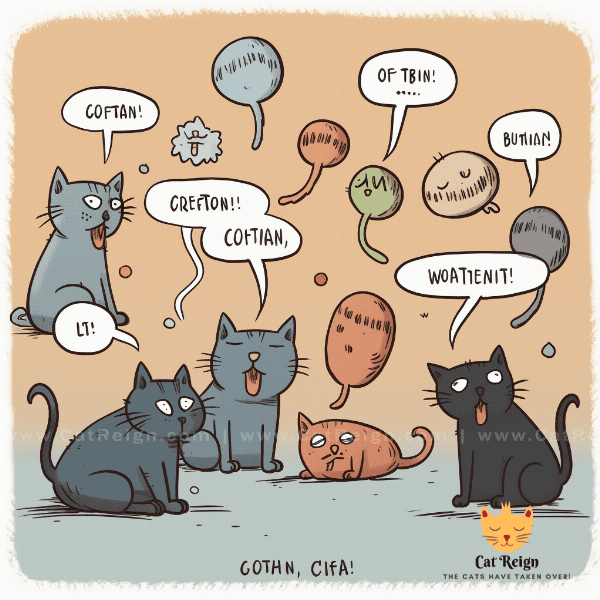
Conclusion: Developing a Stronger Bond with Your Cat through Vocalization
In conclusion, vocalization is an important part of feline communication, and by understanding your cat’s unique vocalizations and body language, you can develop a deeper bond with your pet. Whether it’s meowing, purring, hissing, or growling, each vocalization has its own unique meaning, and by responding to your cat in kind, you can show them that you understand and care for their needs.
It’s also important to remember that vocalization is just one aspect of feline communication, and that cats use a variety of other cues, such as body language, scent marking, and facial expressions, to express themselves. By paying attention to these cues and responding appropriately, you can develop a strong and loving relationship with your cat that is built on trust and understanding.
Finally, it’s important to approach your cat with love and patience, and to always respect their boundaries and unique personalities. By providing your cat with a safe and secure environment, regular wellness checks, and plenty of love and attention, you can help them to thrive and lead a happy and healthy life.
We hope that this guide has provided you with a deeper understanding of feline vocalization and how to communicate effectively with your cat. With patience, love, and attention, you can build a bond with your cat that will last a lifetime.
